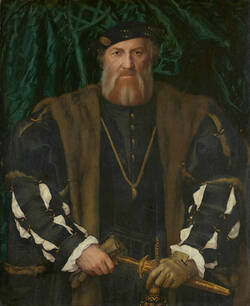Born close to Dresden, artist Wilhelm Lachnit became part of the New Objectivity movement, which aimed at reflecting social reality in factual and unvarnished images. In 1926, Lachnit painted this young woman in a fur coat. With her bobbed hair, she embodies the ‘New Woman’ of the 1920s. For the first time, women could decide for themselves how they lived, could study and take up professions previously closed to them. As curator Birgit Dalbajewa tells us, Lachnit’s model was a fellow artist – the photographer Maria Tokewa,
“...Possibly she had simply slipped on the coat in his studio – after all, many artists’ studios had an old fur coat if they had to practice painting furs. But perhaps she just wore it because it was cold – the artists really didn’t have a lot of money.”
In her voluminous fur coat, clearly far too big for her, the serious young woman is an attractive subject – and also resonates with works by canonical artists from the Renaissance on. Just like many artists in the New Objectivity movement, Lachnit also took that canon of art as a point of reference. From that perspective, Lachnit’s Girl in a Fur Coat is a new version of a painting by Hans Holbein the Younger from around 400 years earlier, a work which Lachnit knew from the Dresden Old Masters collection. In his painting, Holbein shows an elegant man in a chamarre, an unbelted coat with very wide arms and a fur lining, set against a shimmering green velvet background:
“So there is a resonance – the fur set off against dark green, with the bright skin colour in between, that’s an idea you find in Old Master paintings. It would be wrong, though, to imagine a work merely being copied one-to-one. Here, the tonality, so well-known from canonical paintings, is taken up and reworked in a modern 1920s picture.”
Comparison image: Hans Holbein d. J., Charles de Solier, Sieur de Morette
Further Media
- Location & Dating
- 1925/26
- Material & Technique
- Öl auf Leinwand
- Dimenions
- 120,5 x 67,5 cm (Katalogmaß 2010) 120 x 67 cm (Katalogmaß) 120,5 x 67,5 cm (Inventurmaß, 01.12.2010) 133,4 x 81 x 3,7 cm (Rahmenmaß, Tilman Heitmann, 01.12.2010)
- Museum
- Galerie Neue Meister
- Inventory number
- Gal.-Nr. 2614
